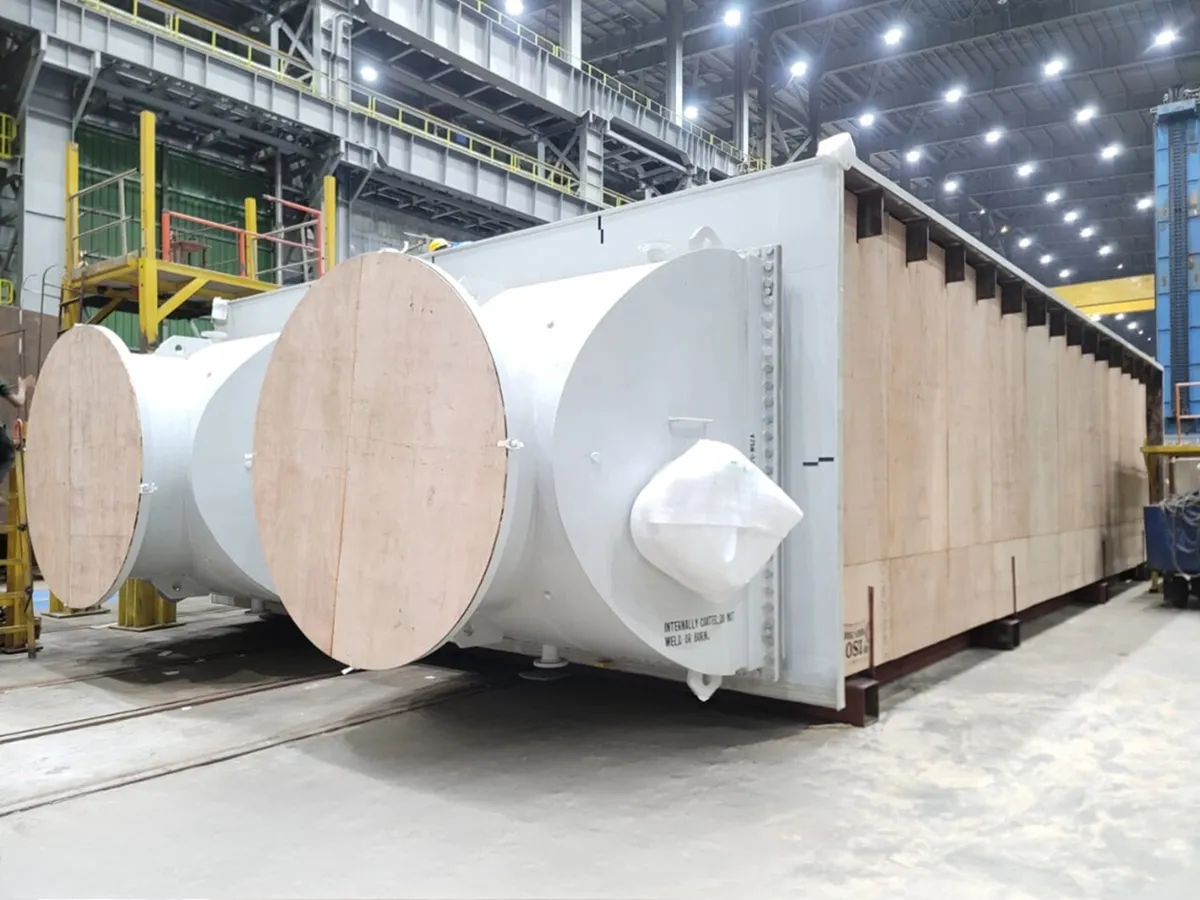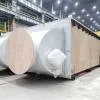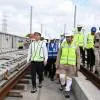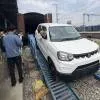CW introduces Equipment Apps, a knowledge-sharing platform that presents case studies of construction methods and showcases application-centric equipment deployed for the same. This inaugural column focuses on the drill blast method of tunnelling in consultation with Hindustan Construction Company (HCC) Ltd.
Tunnels are an essential part of infrastructure projects like hydroelectric power, road transportation, railways, metro rail and water supply. Their locations range from mountains and rivers to urban areas. Despite the advent of modern and sophisticated tunnel boring machines, the most common method of tunnelling still remains drill and blast.
Project information
The drill and blast method of tunnelling has been applied in ongoing projects like Kishanganga Hydroelectric Project (HEP) for a tail race tunnel (TRT); penstocks and draft tube in Kashmir; Sainj HEP - head race tunnel (HRT) in Himachal Pradesh; Tehri HEP for access adits and penstock tunnels in Uttarakhand; Vishnugarh-Pipalkoti HEP diversion tunnel; T49 and T49A railway tunnels at Pirpanjal in Kashmir; and many other such projects in India. Upcoming projects include Ganderbal HEP near Srinagar and Samalkot road tunnel. These two projects will be started soon by HCC. In Bhutan, HCC has recently completed an HEP in Dagachhu. Another one is going on at Punatsangchhu where the excavation is almost complete.
Work sequence
The process starts by construction of access tunnels or adits to reach the main tunnel and then the construction of main tunnels in most of the HEP applications. Usually, adits are not required in road and railway tunnels. However, in deep underground tunnels, vertical access shafts are created at strategic locations for lowering all the equipment and resources to reach the main tunnel.
As SD Jeur, Head-Construction, HCC and Satish Kumar Sharma, Head-Engineering, HCC, tell us, the standard work sequence for drill blast method is as follows:
- Surveying: Tunnel profiling.
- Probe drilling: To ascertain the nature of the immediate oncoming rock strata.
- Marking and drilling: Drilling holes in the face of the tunnel to facilitate charging.
- Charging: Filling the holes with explosives.
- Blasting: Detonation of explosives.
- De-fuming: Removal of post-blast fumes through forced air ventilation.
- De-mucking: Collecting and loading blasted rock material and debris.
- Transportation: Removal of blast material out of the tunnel to the discharge areas.
- Scaling: Removal of rock protrusions from the tunnel face.
- Repeating the above steps to proceed further.
Additions to standard work sequence
Depending up on the geological conditions encountered during tunnelling and size of the tunnel, necessary additions have to be made to the standard work sequence. Some of them are:
- Heading and benching: The excavation process is broken into two parts in large size tunnels because the drilling equipment has limitations of reach. Above the spring line, first the heading is done at the top portion, followed by benching till the required vertical height and width of the tunnel are achieved.
- Rock bolting: Drilling holes and inserting long bolts for supporting the rock surface. ò Shortcreting: Concrete spraying of the tunnel surface to prevent rocks from falling down.
- Ribs or lattice girders provision: Additional support of the tunnel surface.
- Shortcrete of supports to embed them in concrete.
- Backfilling of ribs and lattice girders.
- Grouting of the face.
- Fore poling and roofing: Inserting pipes ahead of the tunnel face and filling them with concrete to prevent the tunnel roof from collapsing.
- Other specific and special methods.Note: The process cycle time increases proportionately on account of applying any or all of the above additional processes.
Equipment required and application
Nearly 65 different categories of equipment are required to execute a complete tunnelling project. They can be grouped as survey instruments, excavation, concrete, miscellaneous and workshop equipment. Showcased below are equipment directly involved in drill and blast operations with their applications. They may be part of the standard work sequence or additional work processes, as the case may be.
- Drilling jumbo: One, two or three boom drilling rigs are used to drill holes on tunnel face for charging and on the roof and side walls for fixing rock bolts. The number of booms depends on the size of the tunnel. The equipment has a provision for a person to stand and carry out various functions.
- Pneumatic crawler drill: This is a small machine used for drilling holes in inaccessible portions of the tunnel.
- Hydraulic excavator: Inside large-size tunnels, a hydraulic excavator is used to collect and load the blast material on the dumperfor haulage. It is also utilised for scaling operation.
- Hydraulic rock breaker: Sometimes, hard rock or large boulders are encountered during tunnel excavation. A suitable rock breaker is mounted on the excavator and used to break the same to smaller sizes. Working in tunnel applications means an extremely dusty environment; breakers are used mainly in the horizontal or overhead position.
- Raise climber: Application-specific drilling equipment to excavate vertical tunnels like shafts, etc.
- Hydraulic surface drill: Special equipment used for drilling either vertical or horizontal holes for charging, during benching of the tunnel.
- Tunnel excavator: When soft rock strata are encountered, these machines directly excavate the tunnel. In such applications, conventional charging and blasting is discontinued.
- Front-end loader: Depending upon tunnel size, a small or large front-end loader is used to collect the blast material and load the same into dumpers for haulage.
- Tunnel loader: When the tunnel size is very small, this low height front-end loader is used to carry out blast material from the face all the way outside the tunnel. Sometimes, niches are created to enable this equipment to back up into the same and then load the material into low height dumpers for haulage. A special tunnel loader rapidly collects the blast material and directly loads the same into the dumper through a steel conveyor.
- Tipping dumper: Usually, 15 to 25 tonne capacity tipping dumpers are deployed for haulage. However, Jeur recommends using minimum 40-tonne capacity dumpers wherever possible to improve productivity.
- Telehandler with rib-catcher attachment: A telehandler equipped with a special attachment for handling the tunnel ring or rib is used for carrying preassembled ribs inside the tunnel up to the tunnel face and installing the same on the tunnel roof and sides. The use of this equipment provides full safety to the workmen during this accident-prone operation. Earlier, the method of rib installation was crude and unsafe causing fatal accidents. In addition, this equipment can be used for other material handling purposes by changing the various attachments available with these machines.
Occupational hazards and safety
Tunnelling by the drill and blast method is full of occupational hazards, leading to safety concerns and huge construction delays. ¨Unpredictable geology is the most significant factor. In India, the Himalayan geology is one of the worst in the world,¨ say Jeur and Sharma. To this, R Madhavan, Project Director-Hydro EPC Projects, HCC, adds, ¨Major challenges lie in the terrain and geology of the tunnelling projects. Most projects are being executed in the Himalayan region.¨
Rocks are classified from one to five. Rock class one is the best while rock classes two and three are easily manageable by simple modification of the work process. However, when rock class four, five or even worse conditions are encountered, specialised and job specific treatment is necessary, according to Sharma. Anuran Ghatak, General Manager-Equipment, HCC, says, ¨If the rock class is good, one cycle can be done in eight to nine hours; this means that in 24 hours, we can do three cycles.¨ Jeur describes his most memorable experience, saying, ¨At one of our projects in Punatsangchu, Bhutan, in the Himalayan range, after drilling for 2 km, we had only 450 m left when we met the worst geological strata in the world. There, we adopted 120-mm diameter forepoles. First, we did forepoling of 15 to 20 m length. We required dry drilling machine, as wet drilling was not recommended. This was a high challenge, which required special equipment that could do dry drilling. We used the Casagrande dry drilling machine with a boom length of 15 m and we could insert the pipes. After that, we grouted and concreted the entire portion. Thereafter, we had to proceed slowly by providing supports at short intervals. In a month, we could only do 14 to 15 m length per face. There were two faces.¨ Most occupational hazards related to poor geology result in chimney formation above the tunnel and sudden collapse of tunnel roof or sides. Excessive water discharge inside the tunnel, presence of sub-terrain water bodies, hot or cold operating conditions inside the tunnel and inclement weather are other occupational hazards requiring suitable solutions.
¨Chimney formation is an execution fault and can be avoided by strictly adhering to the work method,¨ says Jeur. He quotes the example of the 11-km railway tunnel constructed by HCC in the Pirpanjal T48 project in Kashmir, wherein despite adverse geological conditions and immense water discharge, chimney formation was completely avoided.
Tunnelling - an art
All considered, the drill and blast method is a complex process as there are unpredictable variables expected at any stage despite conducting detailed studies before commencing work. Each tunnel has unique features in its job. Jeur sums it up, ¨Tunnelling is not only engineering; it is an art!¨
- SHANKAR SRIVASTAVA



















